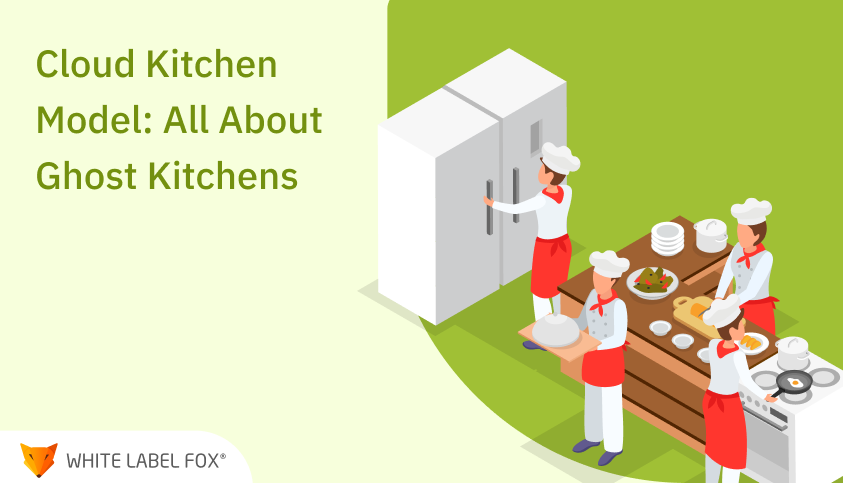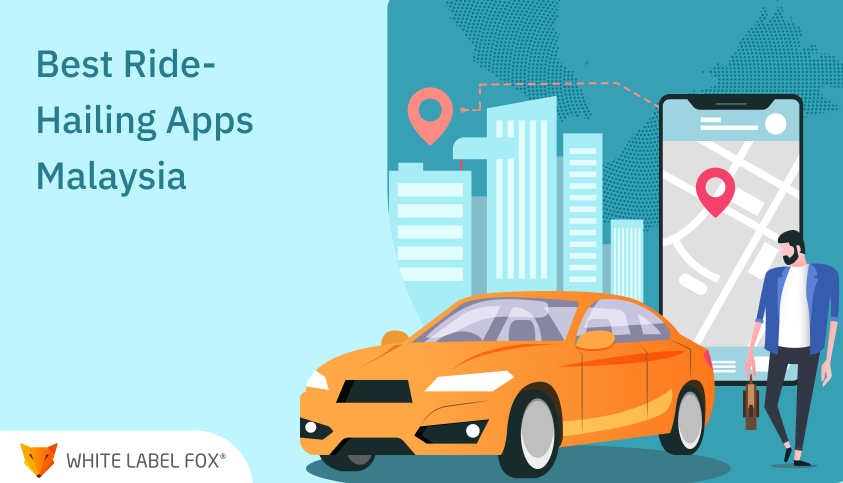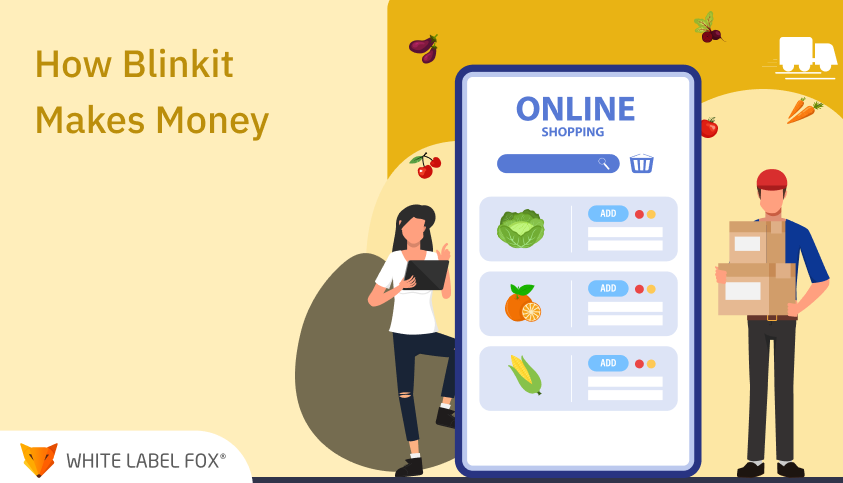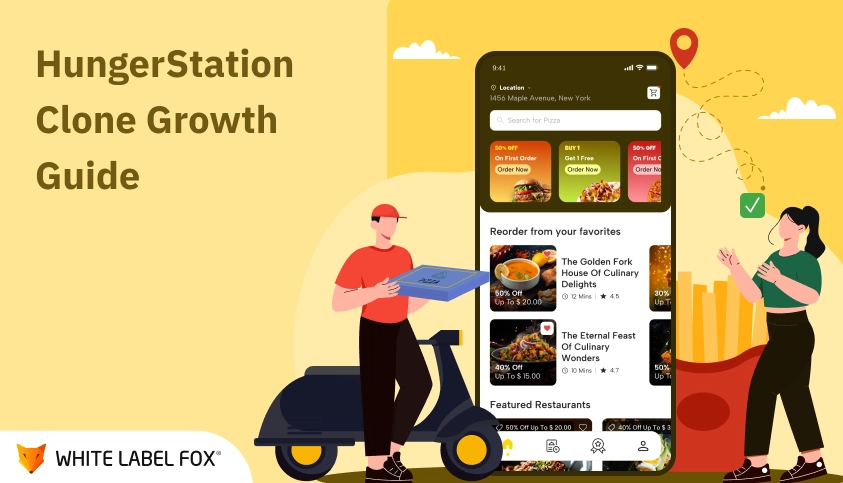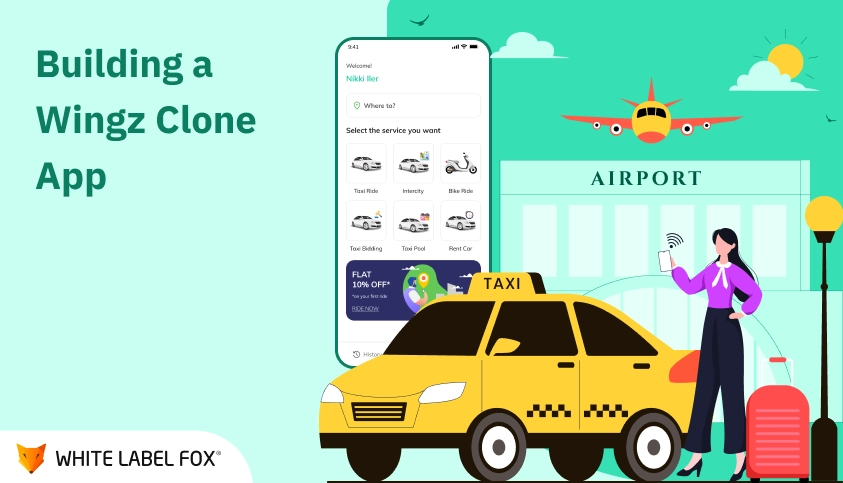Cloud kitchens, ghost kitchens, dark kitchens, or virtual restaurants, whatever you choose to call them, primarily mean the same thing – a restaurant that runs on a delivery-only model. The cloud kitchen market is booming. It was valued at US $44.9 billion in 2023 and is expected to grow to US $154.9 billion by 2035, growing at a CAGR of 11% from 2024 to 2035.
The market seems promising to entrepreneurs wishing to enter the food industry. The interesting fact is that opening a cloud kitchen is much simpler than a traditional restaurant. You need less time and investment costs and yield high revenue. This article is designed to serve you as a guide to start a cloud kitchen business.
We’ve covered a complete cloud kitchen business model, from how it works to its business models, its advantages, disadvantages, and the investment cost you need to build a successful cloud kitchen business. Without further ado, let’s get started.
How Cloud Kitchen Works?
Cloud kitchen is a food processing facility where restaurants rent a space or run the business from their home. Cloud kitchens work the same way a normal kitchen in a traditional restaurant works. They will have everything from kitchen appliances, utensils, counters, storage area, preparation area, and grocery items – except sitting arrangements for customers as they don’t serve diners in-house.
Contrary to what is usually thought of, opening a cloud kitchen business is not easy. While it’s easier than dine-in services, ghost kitchens still require some good understanding before you dive in to start your outlet. The first thing to decide is what business model you want for your cloud kitchen. Let’s understand each model thoroughly to determine which will be best for your requirements.
Learn How to Build Food Delivery Apps From Experts
Contact us to know the complete app development process, quote, and customized plan.
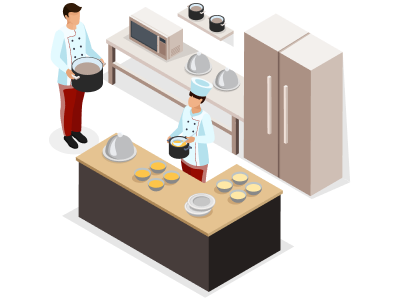
Types of Cloud Kitchen Business Models
The cloud kitchen segment is diverse and there are multiple models entrepreneurs can follow. Before you start a cloud kitchen venture, knowing these models is essential to deciding which way you would want to go. Here, we have discussed each model in detail to let you know which suits your requirements the best.
1. Single-Brand Cloud Kitchens
If you are the only owner of your kitchen space, it’s called a single-brand cloud kitchen business. In this model, only you own the space and resources and carry out business operations under that roof. Single-brand cloud kitchens are best for low upfront investments. These cooking spaces are usually set up in low-rent areas to reduce rent costs, rather than bustling streets where setting up kitchen space is more expensive.
Moreover, single-brand kitchens are typically small segments but have great scaling potential. Since you’re the only owner of your kitchen space, you can modify the infrastructure per your requirements. You can even offer dine-in services as your business grows. So, starting a single-brand cloud kitchen is easier with a small investment capital than starting a full-fledged eatery business.
2. Multi-Brand Cloud Kitchens
In a multi-brand cloud kitchen business model, multiple brands own and work under a safe kitchen space, but have separate cooking facilities. Each brand has its own utensils, appliances, and preparation space, and operates independently under a shared roof. Same as single-brand kitchens, this business model too, has lower upfront investment.
Moreover, since you’re sharing the space with other brands, you can expect shared expenses in rent, utilities, and maintenance, reducing the overall operational costs. You share the kitchen space with multiple individual brands, which means you save a significant amount on expenses and access high-end facilities at a fraction of the cost compared to single-brand kitchens.
3. Virtual Restaurants
Guess what cloud kitchens and dine-in restaurants have in common? A kitchen unit. Cloud kitchens don’t have (and don’t need) a sitting facility for customers, but they need a kitchen to process their food. And if you allow cloud kitchens to operate from a kitchen unit of an existing restaurant, it becomes a virtual kitchen.
A virtual kitchen is an extension of an existing eatery where the virtual segment has a separate menu and serves delivery-only orders. This business model is usually an expansion of restaurants that want to run an eatery using its own kitchen and staff. But why would restaurants do that? One of the reasons could be to offer a new cuisine than what the restaurant is known for. It’s a great way for eateries to experiment with their products and expand their reach to a vast customer base.
4. Commissary Cloud Kitchens
Commissary cloud kitchens are also known as hub and spoke, where a central cloud kitchen (hub) delivers prepared food to other brands (spokes). This is a B2B cloud kitchen model. Such cooking spaces prepare food items that only need the last touch before serving or delivering. This almost-prepared food item is then delivered to single or multiple brands, who then finish the final product and deliver it to their customers.
Restaurants and other cloud kitchens can leverage commissary services to boost productivity. Since they delegate the task of preparing food to third parties, they can focus on other business aspects and boost their productivity. On the other hand, you don’t need the infrastructure for the end-customer-focused delivery model, offering a win-win situation for both parties.
5. Delivery App-Owned Cloud Kitchens
In this business model, the cloud kitchen is completely owned by on-demand food delivery apps like Uber Eats, DoorDash, GrubHub, etc. Delivery apps usually manage orders, but if they’re working in this model, they also engage in the food preparation process through virtual brands. Here, the relationship between delivery apps and virtual brands is more than just aggregating the product.
Food delivery apps provide a space for virtual brands in return for shared revenue, and virtual brands can showcase their products exclusively on the app, providing the app a competitive edge. Both business segments work in a collaborative manner where virtual brands use apps to attract more customers, while good apps leverage virtual brands’ new products to boost engagement on their platforms.
Usually, delivery apps’ partnership managers reach out to virtual brands and establish these agreements. The drawback of such an exclusive agreement is that virtual brands could miss out on opportunities with other delivery platforms. However, they get the kitchen space and exposure that the delivery app provides. It can be a great business model for virtual brands that have tried their products on a platform and experienced some success.
Advantages of Cloud Kitchens
Cloud kitchens have increasingly emerged in recent years, all thanks to the convenience and growth opportunity they offer that a traditional eatery can’t provide. Opening a cloud kitchen business has many benefits that make it a great business idea. Here we have discussed some of the major advantages of cloud kitchens, stating how it gives entrepreneurs an upper hand over traditional restaurants.
1. Lower Upfront Investment Cost
Starting a traditional restaurant takes an average of US $750,000, considering you choose the prime location for your business. A cloud kitchen, on the other hand, can be started with just US $30,000 on average. Apparently, ghost kitchens have much lower upfront investment costs than full-fledged dine-in eateries because you can start your business with a small space and even in a less desirable location.
Moreover, you can totally discard the cost of creating furniture for sitting arrangements, purchasing utensils and cutleries to serve food to customers, hiring and training staff to serve your customers, and investing in decoration to create ambiance, as a cloud kitchen doesn’t serve customers in person. This less upfront investment allows you to take risks, experiment with your offering, and refine your menus with less pressure.
2. Faster To Launch
Starting a restaurant business could take anywhere from six months to a year. You have to prepare for many things: designing, building new space, obtaining permits, renovating existing space to suit your restaurant brand, purchasing crockery and decor items, hiring and training serving staff, and creating marketing campaigns to promote your eatery and attract customers.
Even with all these efforts, there is no sure-shot guarantee that your venture will be successful instantly. It would take time – at least six months post-launch – to get decent traffic to your firm. With ghost kitchens, you can end all these hassles since these outlets can be set up within a month and do not depend on customers coming to the location. The on-demand food delivery apps make it easier to reach out and serve customers.
3. Higher Margins and Competitive Pricing
Even if we take delivery costs into consideration, ghost kitchens are still more affordable than running a brick-and-mortar restaurant. Dine-in eateries generate more revenue, but less profit. Operational costs and infrastructure maintenance expenses take up more slices of the restaurant margin pie. And this is where cloud kitchens can be a profitable business.
Eliminating the major part – the customer-facing segment – from the business, ghost kitchens save significantly on margins. High margins allow you to offer competitive prices. Providing the same food quality with lower prices is an irresistible customer-attracting strategy. This is where cloud kitchens can beat the traditional restaurants and grow in the food and beverages market.
4. Complete Focus on Food Only
Operating a traditional restaurant business involves many tasks from managing tables to supervising staff, handling reception, and ensuring the diner gets the best experience. It’s a lot of work. Amid all the chaos, managers sometimes can’t focus on their most important offering – delicious food. In the cloud kitchen segment, however, all these tasks are absent.
Cloud kitchens can channel their entire focus on preparing food and delivering it to their customers on time. Since they don’t serve dine-in customers, they don’t have any other things to look at other than making delicious food. It also allows them to experiment with their menu and diversify their offering, catering to a large segment of diners on the food delivery platforms.
5. Easy Scaling Opportunities
Cloud kitchen businesses offer great scaling opportunities, allowing owners to reach a whole new customer segment. Quick deliveries aren’t just an added facility anymore, they’ve become a necessity. To be able to complete the order in a matter of minutes, you must set up more than one outlet at strategic locations across the cities.
With the cloud kitchen model, it becomes much easier to establish various outlets than traditional restaurants. Another major benefit cloud kitchens offer is the flexibility to scale up or down your business as needed. Ghost kitchens can work as multiple brands, each catering separate cuisine. It allows restaurants to diversify their offering under the same roof, while also maintaining the authenticity of each brand.
Disadvantages of Cloud Kitchens
While lacking the physical space and dine-in infrastructure offers a great advantage, cloud kitchens have their fair share of disadvantages, too. Learn here what challenges you might face while starting a ghost kitchen business and how you can tackle them.
1. High Competition
Starting a cloud kitchen business sounds lucrative, but entering the market is not easy. The ghost kitchen sector has become increasingly saturated in recent years. More and more businesses pop up every year and even more shut down, lacking robust strategy and unique selling points to stand out from the crowd. So, if you’re planning to enter the cloud kitchen segment, make sure you have something unique to offer, otherwise, it’s wise to come up with an innovative idea before you start.
2. Reduced Visibility
Cloud kitchens are usually set up in commercial spaces – usually in areas with less footfall – which means they can’t serve customers through walk-ins or drive-by services. Customers can only find your business on food apps. While it might be okay with some people, it could be a little risky for others, especially when businesses are not familiar with technology and digital marketing services.
3. Major Dependency on Food Delivery Platforms
One of the major drawbacks of cloud kitchens is that they are almost entirely dependent on food-ordering apps for delivery. Food apps are a lifeline for the majority of ghost kitchens. They are the visibility area for these brands, so they must abide by the policies set by food apps. Suppose, your food app partner decides to favor certain restaurants or charge you a premium, you wouldn’t have any power to bargain, since you solely rely on their services and have to abide by their policies.
4. You Don’t Own Your Customer’s Data
Most food delivery apps mask consumer data from food service partners – whether they’re restaurants or cloud kitchens. Ghost kitchens do not know whom they are serving, which means they cannot create relationships with their customers. The lack of data eliminates the opportunity to remarket or share promotional offers with customers. This could be one of the major disadvantages of cloud kitchens.
How Much Does it Cost to Build a Cloud Kitchen Business?
While many factors are involved in determining the exact cost of starting a cloud kitchen business, it usually costs around US $100,000 to $150,000. This is a single-time investment estimation and does not involve recurring expenses like maintaining grocery storage, electricity bills, business space rent, and insurance. When you actually sit down to estimate your business investment, you need to keep all these expenses into consideration.
Below, we have enlisted a list of factors you would need to take into account before you start your ghost kitchen business:
- Business Space Rent
- Licenses & Permits
- Equipment Expense
- POS Software
- Insurance
- Inventory
- Staffing
- Marketing
Traditional restaurant businesses also involve hiring front-desk staff, serving staff, furniture, sitting area renovation, and serving utensils, too. Building a sitting space takes up a lot of time and expenses. On the other hand, cloud kitchens exclusively run on a delivery-only model hence these costs are completely absent here.
Since cloud kitchens majorly depend on food delivery apps, they don’t even need to think about marketing or delivery. Food applications handle it for them in exchange for small commission fees from the ghost kitchen’s revenue. This makes opening ghost kitchen businesses much easier than traditional restaurants.
Is Starting an On-Demand Food Delivery App Profitable Business Idea?
Food delivery apps are a major revenue source for ghost kitchens. The ghost kitchen market has grown exponentially in recent years, with many players coming into the field. So, building an on-demand food delivery app and becoming a mediator between customers and cloud kitchens can really be a profitable business idea.
Food delivery apps usually earn through a commission-based business model. They provide cloud kitchens a platform where they can showcase their menu and take orders. In return, food apps charge a small commission from the business’ revenue. Food applications also handle delivery, taking this hassle away from the ghost businesses.
You can initially start as an aggregator app that delivers food to its users and later shift to opening your own cloud kitchen business as you scale. Since more and more people are opting for online food ordering over visiting restaurants most of the time, starting a food delivery app can also be a profitable business idea.
Ending Thoughts
As we conclude our exploration of the cloud kitchen business model, it’s clear now that opening a cloud kitchen can be a high-yielding profession, given you follow the right strategy. Ghost kitchens are much more flexible and less expensive than traditional restaurants, which is why entrepreneurs are considering starting their own dark kitchens rather than on-premise dining businesses.
Cloud kitchens offer ultimate freedom. You can even start your business from our home kitchen and take it to a dedicated space when it scales up. Food apps help you get customers and deliver food, taking a major hassle off of your head. Moreover, if you don’t want to handle the kitchen, you can become an aggregator partner with a food app.
Becoming a third-party aggregator that unites customers with food businesses can also be a profitable business. With the right technology partner like White Label Fox, you can build your own on-demand food delivery app like Uber Eats and start your delivery service business right away. If you’re seriously considering building your food app, we can guide you through the process.
Contact our professionals and provide your requirements. They will quickly come up with a customized quote and a complete road map for developing a food delivery application. You can even get a free consultation with our experts, and get the right guidance on building your app. Partner with us, and let’s build a high-end tech that transforms the food delivery industry.
Frequently Ask Questions
A cloud kitchen, also known as a ghost kitchen or dark kitchen, is a
kitchen facility designed specifically for fulfilling online food
orders. These kitchens do not have a physical storefront or dine-in
area. Instead, they operate solely to prepare and deliver food via
delivery apps like Uber Eats, Zomato, or Swiggy. They may house multiple
brands or restaurants in one location, allowing for cost-efficient
operations.
A cloud kitchen operates by preparing food for delivery-only orders.
These kitchens are set up in strategic locations to minimize delivery
times and costs. Once an order is placed online, the kitchen prepares
the meal and sends it out with the help of delivery personnel, either
employed by the cloud kitchen or through third-party services. The
entire process is digitally managed, from order placement to food
preparation and delivery.
Cloud kitchens offer several advantages over traditional
brick-and-mortar restaurants:
- Lower Overhead Costs: Since cloud kitchens do not require
a
physical dining space, they significantly reduce rental and
operational costs.
- Flexibility: Multiple brands or menus can operate from a
single
kitchen, allowing for quicker expansion and adaptation to market
demands.
- Focus on Delivery: Cloud kitchens specialize in delivery,
ensuring a streamlined process that maximizes efficiency and
customer satisfaction.
- Scalability: It’s easier to expand a cloud kitchen
business by
opening more kitchen facilities in various locations without the
complexities of managing a physical restaurant.
- Lower Overhead Costs: Since cloud kitchens do not require a physical dining space, they significantly reduce rental and operational costs.
- Flexibility: Multiple brands or menus can operate from a single kitchen, allowing for quicker expansion and adaptation to market demands.
- Focus on Delivery: Cloud kitchens specialize in delivery, ensuring a streamlined process that maximizes efficiency and customer satisfaction.
- Scalability: It’s easier to expand a cloud kitchen business by opening more kitchen facilities in various locations without the complexities of managing a physical restaurant.
Cloud kitchens can be categorized into the following types:
- Single-Brand Cloud Kitchens: These kitchens operate a
single
restaurant or food brand. All orders prepared in the kitchen are
from the same menu.
- Multi-Brand Cloud Kitchens: These kitchens house multiple
food
brands or restaurant concepts under one roof. They allow a
single location to offer a diverse range of cuisines.
- Kitchen-as-a-Service (KaaS): These cloud kitchens provide
kitchen space and services for third-party brands or restaurant
operators. They often offer fully equipped kitchens for rent to
those wanting to run delivery-only operations without setting up
their own infrastructure.
- Single-Brand Cloud Kitchens: These kitchens operate a single restaurant or food brand. All orders prepared in the kitchen are from the same menu.
- Multi-Brand Cloud Kitchens: These kitchens house multiple food brands or restaurant concepts under one roof. They allow a single location to offer a diverse range of cuisines.
- Kitchen-as-a-Service (KaaS): These cloud kitchens provide kitchen space and services for third-party brands or restaurant operators. They often offer fully equipped kitchens for rent to those wanting to run delivery-only operations without setting up their own infrastructure.
Cloud kitchens make money primarily through:
- Food Sales: Revenue is generated from customers ordering
food
through online platforms or directly via the brand’s website or
app.
- Delivery Fees: Some cloud kitchens charge customers a
delivery
fee or partner with delivery aggregators to handle logistics and
share the fee.
- Brand Licensing or Kitchen Rentals: Multi-brand cloud
kitchens
can earn from renting out space to other restaurant brands or
operators.
- Subscription Models: Some cloud kitchens may offer
subscription
services for regular customers, such as meal plans or discounted
rates for frequent orders.
- Food Sales: Revenue is generated from customers ordering food through online platforms or directly via the brand’s website or app.
- Delivery Fees: Some cloud kitchens charge customers a delivery fee or partner with delivery aggregators to handle logistics and share the fee.
- Brand Licensing or Kitchen Rentals: Multi-brand cloud kitchens can earn from renting out space to other restaurant brands or operators.
- Subscription Models: Some cloud kitchens may offer subscription services for regular customers, such as meal plans or discounted rates for frequent orders.
Cloud kitchens have several operational costs, including:
- Kitchen Setup and Equipment: Initial investment in
kitchen
appliances, utensils, and cooking equipment.
- Rent and Utilities: Rent for the kitchen space and
utility bills
such as electricity and water.
- Ingredient Procurement: Costs for raw materials and
ingredients
necessary for preparing meals.
- Technology and Software: Expenses related to managing
online
orders, inventory, and customer relationships. This includes
investment in point-of-sale systems and delivery management
platforms.
- Labor Costs: Payments for chefs, kitchen staff, and
cleaning
personnel.
- Marketing and Branding: Costs related to digital
marketing,
social media promotions, and brand-building efforts.
- Kitchen Setup and Equipment: Initial investment in kitchen appliances, utensils, and cooking equipment.
- Rent and Utilities: Rent for the kitchen space and utility bills such as electricity and water.
- Ingredient Procurement: Costs for raw materials and ingredients necessary for preparing meals.
- Technology and Software: Expenses related to managing online orders, inventory, and customer relationships. This includes investment in point-of-sale systems and delivery management platforms.
- Labor Costs: Payments for chefs, kitchen staff, and cleaning personnel.
- Marketing and Branding: Costs related to digital marketing, social media promotions, and brand-building efforts.
Unlike traditional restaurants, cloud kitchens operate without physical
storefronts, focusing exclusively on delivery. They leverage digital
platforms for receiving orders, and often do not have waitstaff,
front-of-house operations, or dine-in facilities. This model reduces
overhead costs associated with restaurant real estate, decor, and
front-end operations. Additionally, cloud kitchens can often house
multiple brands under one roof, offering diverse food options from a
single location.
Cloud kitchens face several challenges:
- High Competition: The rise of cloud kitchens has led to
intense
competition, especially in cities with a high number of delivery
apps and service providers.
- Customer Retention: Since cloud kitchens lack physical
spaces,
building customer loyalty and repeat business can be challenging
without proper engagement strategies.
- Quality Control: Maintaining consistent food quality and
packaging standards can be difficult, especially when dealing
with large volumes of delivery orders.
- Delivery Logistics: Ensuring fast, timely, and safe
delivery
remains a challenge, particularly in cities with high traffic or
weather-related disruptions.
- Brand Visibility: Without a physical location, cloud
kitchens
may struggle to differentiate themselves and get noticed by
customers amidst many online food delivery options.
- High Competition: The rise of cloud kitchens has led to intense competition, especially in cities with a high number of delivery apps and service providers.
- Customer Retention: Since cloud kitchens lack physical spaces, building customer loyalty and repeat business can be challenging without proper engagement strategies.
- Quality Control: Maintaining consistent food quality and packaging standards can be difficult, especially when dealing with large volumes of delivery orders.
- Delivery Logistics: Ensuring fast, timely, and safe delivery remains a challenge, particularly in cities with high traffic or weather-related disruptions.
- Brand Visibility: Without a physical location, cloud kitchens may struggle to differentiate themselves and get noticed by customers amidst many online food delivery options.
To ensure food quality and customer satisfaction, cloud kitchens
typically:
- Implement Strict Quality Control Processes: They follow
standardized cooking methods, use fresh ingredients, and ensure
hygiene standards are met.
- Use Reliable Packaging: Cloud kitchens invest in quality
packaging that ensures food reaches customers in optimal
condition.
- Leverage Customer Feedback: Reviews and ratings from
customers
help cloud kitchens improve their service and make necessary
adjustments.
- Timely Deliveries: Efficient logistics and partnerships
with
reliable delivery platforms ensure orders reach customers
quickly.
- Implement Strict Quality Control Processes: They follow standardized cooking methods, use fresh ingredients, and ensure hygiene standards are met.
- Use Reliable Packaging: Cloud kitchens invest in quality packaging that ensures food reaches customers in optimal condition.
- Leverage Customer Feedback: Reviews and ratings from customers help cloud kitchens improve their service and make necessary adjustments.
- Timely Deliveries: Efficient logistics and partnerships with reliable delivery platforms ensure orders reach customers quickly.
Cloud kitchens provide several benefits to restaurant owners and
aspiring entrepreneurs:
- Lower Initial Investment: Setting up a cloud kitchen
requires less capital compared to a full-scale restaurant,
making it an ideal option for new entrepreneurs.
- Easier Market Entry: Owners can test different food
concepts or brands without committing to a large, expensive
restaurant space.
- Increased Reach: Cloud kitchens enable restaurant owners
to tap into a wider market by leveraging food delivery apps and
online ordering systems.
- Operational Flexibility: The ability to easily scale the
business and operate multiple brands from one location offers
operational flexibility.
- Lower Initial Investment: Setting up a cloud kitchen requires less capital compared to a full-scale restaurant, making it an ideal option for new entrepreneurs.
- Easier Market Entry: Owners can test different food concepts or brands without committing to a large, expensive restaurant space.
- Increased Reach: Cloud kitchens enable restaurant owners to tap into a wider market by leveraging food delivery apps and online ordering systems.
- Operational Flexibility: The ability to easily scale the business and operate multiple brands from one location offers operational flexibility.

